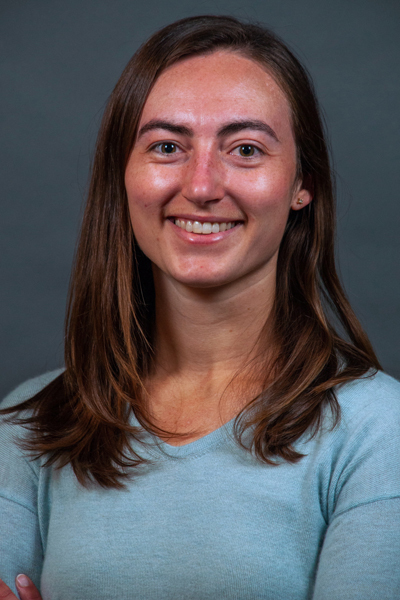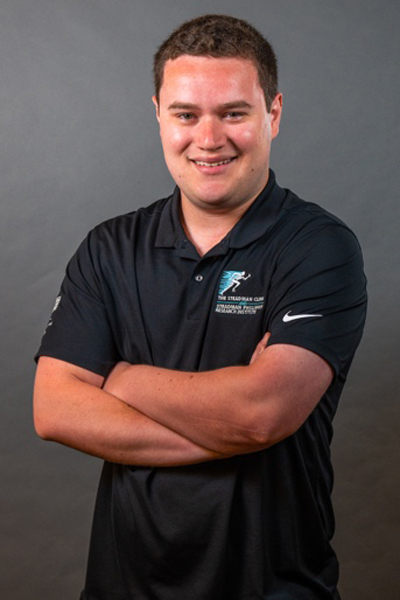For up-to-date publication updates see: http://www.ncbi.nlm.nih.gov/pubmed/?term=charles+p+ho
2020:
Lockard CA, Stake IK, Brady AW, DeClercq MG, Tanghe KK, Douglass BW, Nott E, Ho CP, Clanton TO. Accuracy of MRI-Based Talar Cartilage Thickness Measurement and Talus Bone and Cartilage Modeling: Comparison with Ground-Truth Laser Scan Measurements. CARTILAGE. 2020. doi: 10.1177/1947603520976774
2019:
Lockard CA, Chang A, Clanton TO, Ho CP. T2* mapping and subregion analysis of the tibialis posterior tendon using 3 Tesla magnetic resonance imaging. Br J Radiol. 2019;92(1104):20190221. doi:10.1259/bjr.20190221
Schon JM, Brady AW, Krob JJ, et al. Defining the three most responsive and specific CT measurements of ankle syndesmotic malreduction. Knee Surg Sports Traumatol Arthrosc. 2019;27(9):2863-2876. doi:10.1007/s00167-019-05457-8
Wilson KJ, Fripp J, Lockard CA, et al. Quantitative mapping of acute and chronic PCL pathology with 3 T MRI: a prospectively enrolled patient cohort. J Exp Orthop. 2019;6(1):22. doi:10.1186/s40634-019-0188-2
Lockard CA, Chang A, Shin RC, Clanton TO, Ho CP. Regional variation of ankle and hindfoot cartilage T2 mapping values at 3 T: A feasibility study. Eur J Radiol. 2019;113:209-216. doi:10.1016/j.ejrad.2019.02.011
2018:
LaPrade RF, Cram TR, Mitchell JJ, et al. Axial-Oblique Versus Standard Axial 3-T Magnetic Resonance Imaging for the Detection of Trochlear Cartilage Lesions: A Prospective Study. Orthop J Sports Med. 2018;6(10):2325967118801009. doi:10.1177/2325967118801009
Lockard CA, Wilson KJ, Ho CP, Shin RC, Katthagen JC, Millett PJ. Quantitative mapping of glenohumeral cartilage in asymptomatic subjects using 3 T magnetic resonance imaging. Skeletal Radiol. 2018;47(5):671-682. doi:10.1007/s00256-017-2829-9
Schlegel TF, Abrams JS, Bushnell BD, Brock JL, Ho CP. Radiologic and clinical evaluation of a bioabsorbable collagen implant to treat partial-thickness tears: a prospective multicenter study. J Shoulder Elbow Surg. 2018;27(2):242-251. doi:10.1016/j.jse.2017.08.023
2017:
Millett PJ, Espinoza C, Horan MP, et al. Predictors of outcomes after arthroscopic transosseous equivalent rotator cuff repair in 155 cases: a propensity score weighted analysis of knotted and knotless self-reinforcing repair techniques at a minimum of 2 years. Arch Orthop Trauma Surg. 2017;137(10):1399-1408. doi:10.1007/s00402-017-2750-7
Paproki A, Engstrom C, Strudwick M, et al. Automated T2-mapping of the Menisci From Magnetic Resonance Images in Patients with Acute Knee Injury. Acad Radiol. 2017;24(10):1295-1304. doi:10.1016/j.acra.2017.03.025
Neubert A, Wilson KJ, Engstrom C, et al. Comparison of 3D bone models of the knee joint derived from CT and 3T MR imaging. Eur J Radiol. 2017;93:178-184. doi:10.1016/j.ejrad.2017.05.042
Aga C, Wilson KJ, Johansen S, Dornan G, La Prade RF, Engebretsen L. Tunnel widening in single- versus double-bundle anterior cruciate ligament reconstructed knees. Knee Surg Sports Traumatol Arthrosc. 2017;25(4):1316-1327. doi:10.1007/s00167-016-4204-0
Wilson KJ, Surowiec RK, Johnson NS, Lockard CA, Clanton TO, Ho CP. T2* Mapping of Peroneal Tendons Using Clinically Relevant Subregions in an Asymptomatic Population. Foot Ankle Int. 2017;38(6):677-683. doi:10.1177/1071100717693208
2016:
Chandra SS, Surowiec R, Ho C, et al. Automated analysis of hip joint cartilage combining MR T2 and three-dimensional fast-spin-echo images. Magn Reson Med. 2016;75(1):403-413. doi:10.1002/mrm.25598
Wilson KJ, Surowiec RK, Ho CP, et al. Quantifiable Imaging Biomarkers for Evaluation of the Posterior Cruciate Ligament Using 3-T Magnetic Resonance Imaging: A Feasibility Study. Orthopaedic Journal of Sports Medicine. 2016;4(4):232596711663904. doi:10.1177/2325967116639044
Ganal E, Ho CP, Wilson KJ, et al. Quantitative MRI characterization of arthroscopically verified supraspinatus pathology: comparison of tendon tears, tendinosis and asymptomatic supraspinatus tendons with T2 mapping. Knee Surg Sports Traumatol Arthrosc. 2016;24(7):2216-2224. doi:10.1007/s00167-015-3547-2
Spiegl UJ, Horan MP, Smith SW, Ho CP, Millett PJ. The critical shoulder angle is associated with rotator cuff tears and shoulder osteoarthritis and is better assessed with radiographs over MRI. Knee Surg Sports Traumatol Arthrosc. 2016;24(7):2244-2251. doi:10.1007/s00167-015-3587-7
Ho CP, Surowiec RK, Frisbie DD, et al. Prospective In Vivo Comparison of Damaged and Healthy-Appearing Articular Cartilage Specimens in Patients With Femoroacetabular Impingement: Comparison of T2 Mapping, Histologic Endpoints, and Arthroscopic Grading. Arthroscopy. 2016;32(8):1601-1611. doi:10.1016/j.arthro.2016.01.066
Ho CP, Ommen ND, Bhatia S, et al. Predictive Value of 3-T Magnetic Resonance Imaging in Diagnosing Grade 3 and 4 Chondral Lesions in the Hip. Arthroscopy. 2016;32(9):1808-1813. doi:10.1016/j.arthro.2016.03.014
2015:
Xue N, Doellinger M, Fripp J, Ho CP, Surowiec RK, Schwarz R. Automatic model-based semantic registration of multimodal MRI knee data. J Magn Reson Imaging. 2015;41(3):633-644. doi:10.1002/jmri.24609
Ho CP, James EW, Surowiec RK, et al. Systematic technique-dependent differences in CT versus MRI measurement of the tibial tubercle-trochlear groove distance. Am J Sports Med. 2015;43(3):675-682. doi:10.1177/0363546514563690
LaPrade RF, Ho CP, James E, Crespo B, LaPrade CM, Matheny LM. Diagnostic accuracy of 3.0 T magnetic resonance imaging for the detection of meniscus posterior root pathology. Knee Surg Sports Traumatol Arthrosc. 2015;23(1):152-157. doi:10.1007/s00167-014-3395-5
Xue N, Doellinger M, Ho CP, Surowiec RK, Schwarz R. Automatic detection of anatomical landmarks on the knee joint using MRI data. J Magn Reson Imaging. 2015;41(1):183-192. doi:10.1002/jmri.24516
Xue N, Doellinger M, Fripp J, Ho CP, Surowiec RK, Schwarz R. Automatic model-based semantic registration of multimodal MRI knee data: Automatic Semantic Registration. J Magn Reson Imaging. 2015;41(3):633-644. doi:10.1002/jmri.24609
Ferro FP, Ho CP, Dornan GJ, Surowiec RK, Philippon MJ. Comparison of T2 Values in the Lateral and Medial Portions of the Weight-Bearing Cartilage of the Hip for Patients With Symptomatic Femoroacetabular Impingement and Asymptomatic Volunteers. Arthroscopy. 2015;31(8):1497-1506. doi:10.1016/j.arthro.2015.02.045
Ferro FP, Ho CP, Briggs KK, Philippon MJ. Patient-centered outcomes after hip arthroscopy for femoroacetabular impingement and labral tears are not different in patients with normal, high, or low femoral version. Arthroscopy. 2015;31(3):454-459. doi:10.1016/j.arthro.2014.10.008
Spiegl UJ, Petri M, Smith SW, Ho CP, Millett PJ. Association between scapula bony morphology and snapping scapula syndrome. Journal of Shoulder and Elbow Surgery. 2015;24(8):1289-1295. doi:10.1016/j.jse.2014.12.034
Gatlin CC, Matheny LM, Ho CP, Johnson NS, Clanton TO. Diagnostic Accuracy of 3.0 Tesla Magnetic Resonance Imaging for the Detection of Articular Cartilage Lesions of the Talus. Foot Ankle Int. 2015;36(3):288-292. doi:10.1177/1071100714553469
2014:
Surowiec RK, Lucas EP, Wilson KJ, Saroki AJ, Ho CP. Clinically Relevant Subregions of Articular Cartilage of the Hip for Analysis and Reporting Quantitative Magnetic Resonance Imaging: A Technical Note. CARTILAGE. 2014;5(1):11-15. doi:10.1177/1947603513514082
Surowiec RK, Lucas EP, Fitzcharles EK, et al. T2 values of articular cartilage in clinically relevant subregions of the asymptomatic knee. Knee Surg Sports Traumatol Arthrosc. 2014;22(6):1404-1414. doi:10.1007/s00167-013-2779-2
Surowiec RK, Lucas EP, Ho CP. Quantitative MRI in the evaluation of articular cartilage health: reproducibility and variability with a focus on T2 mapping. Knee Surg Sports Traumatol Arthrosc. 2014;22(6):1385-1395. doi:10.1007/s00167-013-2714-6
Ho CP, Surowiec RK, Ferro FP, et al. Subregional Anatomical Distribution of T2 Values of Articular Cartilage in Asymptomatic Hips. CARTILAGE. 2014;5(3):154-164. doi:10.1177/1947603514529587
Laprade RF, Surowiec RK, Sochanska AN, et al. Epidemiology, identification, treatment and return to play of musculoskeletal-based ice hockey injuries. Br J Sports Med. 2014;48(1):4-10. doi:10.1136/bjsports-2013-093020
Clanton TO, Ho CP, Williams BT, et al. Magnetic resonance imaging characterization of individual ankle syndesmosis structures in asymptomatic and surgically treated cohorts. Knee Surg Sports Traumatol Arthrosc. 2016;24(7):2089-2102. doi:10.1007/s00167-014-3399-1
Anz AW, Lucas EP, Fitzcharles EK, Surowiec RK, Millett PJ, Ho CP. MRI T2 mapping of the asymptomatic supraspinatus tendon by age and imaging plane using clinically relevant subregions. Eur J Radiol. 2014;83(5):801-805. doi:10.1016/j.ejrad.2014.02.002
Devitt BM, Philippon MJ, Goljan P, Peixoto LP, Briggs KK, Ho CP. Preoperative diagnosis of pathologic conditions of the ligamentum teres: is MRI a valuable imaging modality? Arthroscopy. 2014;30(5):568-574. doi:10.1016/j.arthro.2014.01.001
2013:
Clanton TO, Chacko AK, Matheny LM, Hartline BE, Ho CP. Magnetic resonance imaging findings of snowboarding osteochondral injuries to the middle talocalcaneal articulation. Sports Health. 2013;5(5):470-475. doi:10.1177/1941738113497671
Ejnisman L, Philippon MJ, Lertwanich P, et al. Relationship between femoral anteversion and findings in hips with femoroacetabular impingement. Orthopedics. 2013;36(3):e293-300. doi:10.3928/01477447-20130222-17
2012:
Register B, Pennock AT, Ho CP, Strickland CD, Lawand A, Philippon MJ. Prevalence of Abnormal Hip Findings in Asymptomatic Participants: A Prospective, Blinded Study. Am J Sports Med. 2012;40(12):2720-2724. doi:10.1177/0363546512462124





